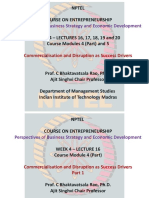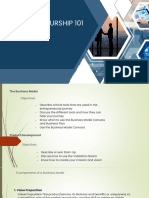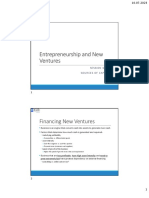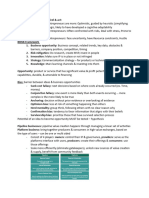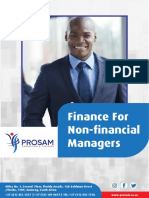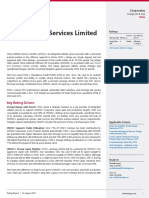0% found this document useful (0 votes)
7 views19 pagesEM Notes
The document outlines the differences between angel investors and venture capitalists, highlighting their definitions, sources of funds, investment stages, amounts, involvement, risk appetites, decision-making processes, ownership stakes, and exit expectations. It also discusses product, process, and business model innovations, detailing their meanings, types, benefits, and risks. Additionally, it presents the Quick Start Route (QSR) for launching businesses, along with its pros and cons, and concludes with various entrepreneurship theories from historical figures emphasizing risk, resource allocation, innovation, motivation, and behavioral perspectives.
Uploaded by
shrutika.malvi29Copyright
© © All Rights Reserved
We take content rights seriously. If you suspect this is your content, claim it here.
Available Formats
Download as PDF, TXT or read online on Scribd
0% found this document useful (0 votes)
7 views19 pagesEM Notes
The document outlines the differences between angel investors and venture capitalists, highlighting their definitions, sources of funds, investment stages, amounts, involvement, risk appetites, decision-making processes, ownership stakes, and exit expectations. It also discusses product, process, and business model innovations, detailing their meanings, types, benefits, and risks. Additionally, it presents the Quick Start Route (QSR) for launching businesses, along with its pros and cons, and concludes with various entrepreneurship theories from historical figures emphasizing risk, resource allocation, innovation, motivation, and behavioral perspectives.
Uploaded by
shrutika.malvi29Copyright
© © All Rights Reserved
We take content rights seriously. If you suspect this is your content, claim it here.
Available Formats
Download as PDF, TXT or read online on Scribd
/ 19















